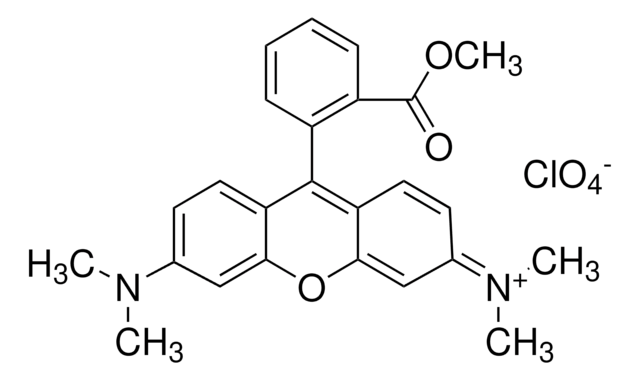D1065
4-(2-[6-(Dioctylamino)-2-naphthalenyl]ethenyl)-1-(3-sulfopropyl)pyridinium inner salt
≥95% purity (HPLC), solid
Synonyme(s) :
Di-8-ANEPPS
About This Item
Produits recommandés
product name
4-(2-[6-(Dioctylamino)-2-naphthalenyl]ethenyl)-1-(3-sulfopropyl)pyridinium inner salt, ≥95% (HPLC), solid
Niveau de qualité
Pureté
≥95% (HPLC)
Forme
solid
Poids mol.
592.88
Couleur
orange to red
Solubilité
DMSO: soluble
ethanol: soluble
ε (coefficient d'extinction)
≥37 at 495-501 nm in methanol
Fluorescence
λex 710-716 nm
Application(s)
diagnostic assay manufacturing
hematology
histology
Température de stockage
2-8°C
Chaîne SMILES
CCCCCCCCN(CCCCCCCC)c1ccc2cc(\C=C\c3cc[n+](CCCS([O-])(=O)=O)cc3)ccc2c1
InChI
1S/C36H52N2O3S/c1-3-5-7-9-11-13-25-38(26-14-12-10-8-6-4-2)36-21-20-34-30-33(18-19-35(34)31-36)17-16-32-22-27-37(28-23-32)24-15-29-42(39,40)41/h16-23,27-28,30-31H,3-15,24-26,29H2,1-2H3
Clé InChI
IXFSUSNUALIXLU-UHFFFAOYSA-N
Actions biochimiques/physiologiques
Liaison
Code de la classe de stockage
11 - Combustible Solids
Classe de danger pour l'eau (WGK)
WGK 3
Point d'éclair (°F)
Not applicable
Point d'éclair (°C)
Not applicable
Équipement de protection individuelle
Eyeshields, Gloves, type N95 (US)
Faites votre choix parmi les versions les plus récentes :
Déjà en possession de ce produit ?
Retrouvez la documentation relative aux produits que vous avez récemment achetés dans la Bibliothèque de documents.
Notre équipe de scientifiques dispose d'une expérience dans tous les secteurs de la recherche, notamment en sciences de la vie, science des matériaux, synthèse chimique, chromatographie, analyse et dans de nombreux autres domaines..
Contacter notre Service technique








